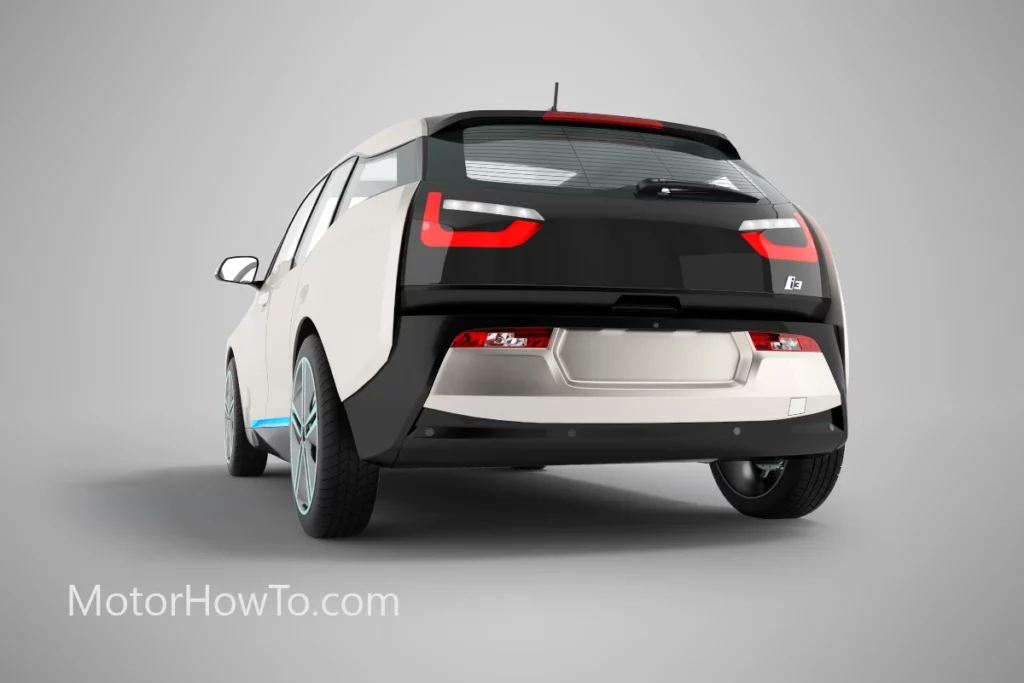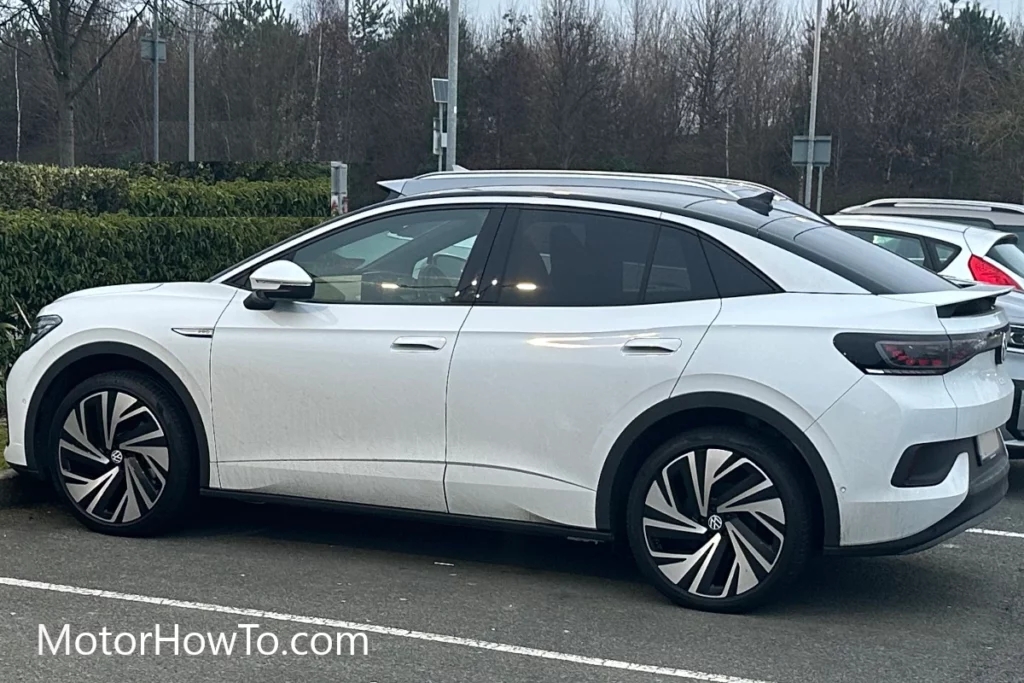Electric cars are gaining popularity among environmentally-conscious drivers due to their eco-friendliness and cost-efficiency.
However, for those who own an electric vehicle (EV), the question of how long the car can sit without being driven can be a cause of concern.
Understanding the impact of inactivity on electric cars’ battery life and the measures you can take to preserve their longevity is important.
An electric car can sit without being driven for weeks or months before the battery loses its charge. But driving or charging it at least once a month is recommended to keep the battery in good condition.

While electric vehicles have numerous advantages over traditional gas-powered cars but also have unique characteristics requiring special attention, unlike gas cars, electric vehicles have large batteries that store energy and power the car’s motor.
This battery technology is complex and requires a specific level of maintenance to prevent deterioration.
In this article, we will explore the effects of inactivity on the battery life of electric cars and provide some tips on maintaining their longevity.
Related:
- How Long Can A Tesla Sit Without Being Used? (Explained)
- How Long Does It Take To Wait After A Tire Plug On EV? (Answered)
- What Happens When Electric Vehicle Loses Power? (Must Read)
Do Electric Cars Lose Charge If Not Driven?
Electric cars rely on their batteries to store energy and power their motor.
The battery will naturally discharge when an electric car is not driven for an extended period. This self-discharge process occurs due to chemical reactions inside the battery cells.
Lithium-ion batteries, commonly used in modern electric cars, have a relatively low self-discharge rate.
This means they can sit for several weeks without losing a significant charge.
However, the self-discharge rate depends on several factors, including battery type, age, temperature, and storage conditions.
But, if the car is not driven or charged for a more extended period, the battery may eventually discharge to a level where it becomes damaged, reducing its overall capacity.
To prevent this from happening, we recommend you drive or charge an electric car at least once a month.
This will help to maintain the battery’s state of charge and preserve its longevity.
Additionally, it’s essential to store the car in a cool, dry place and avoid exposing it to extreme temperatures or direct sunlight, as this can also affect the battery’s performance.
What Is The Battery Degeneration Of EVs Through Time If The Car Is Not Being Driven?
The battery degradation of electric vehicles (EVs) over time is an important factor when deciding whether to buy an EV. The vehicle’s battery can degrade without regular use, decreasing capacity and range.
The EV battery degradation rate depends on various factors, including the type of battery and how it is used.
Generally, a battery will experience a decrease in capacity of up to 5% after 1 year of non-use and up to 20% after 5 years of non-use.
Chemical processes cause this degradation within the battery, and environmental factors such as temperature and humidity.
However, you can minimize battery degradation by properly maintaining the battery.
This includes regular charging, avoiding deep discharging, and keeping the battery away from extreme temperatures.
Additionally, some EV manufacturers have implemented special features such as battery reconditioning, which can help reduce degradation.
Overall, you can reduce the rate of battery degradation with proper maintenance.
However, it is important to remember that the battery will still degrade over time, even if the vehicle is not being driven.
Do Electric Cars Need To Be Started Regularly?
Electric cars do not have an engine that needs to be started, but the battery and other systems may still require periodic maintenance.
When an electric car is not being driven for an extended period, it’s recommended to turn on its electrical systems to prevent the battery from fully discharging.
This will help to maintain the battery’s charge and prevent damage from self-discharge.
In addition to turning on the electrical systems, it’s also recommended to charge the battery periodically.
Electric car batteries can lose charge over time due to self-discharge, impacting the battery’s overall capacity and longevity.
Charging the battery at least once a month can help maintain its charge state and preserve its performance.
Electric cars also have other systems that may require periodic maintenance, such as the HVAC system, brakes, and tires.
These systems may degrade over time, even if the car is not being driven. Inspecting and maintaining these systems regularly is recommended to prevent degradation, even if the car is not being used.
Can an Electric Car Sit For 6 Months?
An electric car can sit for six months, but it’s essential to take precautions to preserve the battery’s health during this time. If an electric car is not being driven for an extended period, the battery may discharge to a level where it becomes damaged, reducing its overall capacity.
To prevent this, we recommend storing the car properly and taking steps to maintain the battery’s state of charge.
Proper storage of an electric car includes parking it in a cool, dry place and covering it to protect it from dust and debris.
It’s also recommended to keep the car’s battery at a partial charge by charging it to around 50% capacity before storing it.
This will help prevent overcharging or undercharging, damaging the battery.
In addition to proper storage, charging or driving the electric car at least once a month is recommended to maintain the battery’s state of charge.
This will help to prevent self-discharge and other factors that can degrade the battery over time.
How Do You Store An EV For 6 Months?
If you plan to store an electric vehicle (EV) for six months or more, it’s important to take the necessary steps to ensure the battery and other systems are properly maintained.
This includes storing the EV in a cool, dry place, maintaining the battery’s charge, and preventing other systems from degrading.
To store an EV properly, we recommend parking it in a garage, or other covered area shielded from direct sunlight and extreme temperatures.
The ideal storage temperature for an EV is around 50°F (10°C) to 70°F (21°C), as temperatures that are too high or too low can negatively impact the battery and other systems.
To maintain the battery’s state of charge, you should charge it to around 50% capacity before storing the EV.
Charging or driving the EV at least once a month is recommended to maintain the battery’s charge and prevent self-discharge.
This will help prevent overcharging or undercharging, damaging the battery.
Additionally, it’s important to avoid leaving the EV in a fully discharged state for an extended period, as this can damage the battery’s cells.
Finally, following the manufacturer’s guidelines for maintaining the HVAC system, brakes, and tires is recommended to prevent other systems from degrading.
This may include inspecting these systems and performing any necessary maintenance before storing the EV for an extended period.
Conclusion
Electric cars are becoming increasingly popular due to their eco-friendliness and cost-efficiency.
However, their batteries can suffer from self-discharge when the vehicle is not driven for an extended period, impacting their overall capacity and longevity.
While newer lithium-ion car batteries have a low self-discharge rate when not used, charging or driving an electric car at least once a month is still recommended to preserve the battery’s state of charge and prevent damage.
Proper maintenance, including avoiding deep discharging and keeping the battery away from extreme temperatures, can help reduce battery degradation over time.
Maintaining other systems, such as the HVAC system, brakes, and tires, is also essential to prevent degradation, even if the car is unused.
When storing an electric car for six months or more, it is important to park it in a cool, dry place, cover it to protect it from dust and debris, and charge the battery to around 50% capacity before storing it to prevent overcharging or undercharging.
By taking these precautions, electric car owners can help to maintain the longevity and performance of their vehicle’s battery and other systems.
Sources
How long can you leave an EV without driving it?
Do Electric Cars Lose Battery Power When Powered Off
Your Guide to EV Batteries: Premature Death, Range Loss And Preservation
Keep your parked electric car and its battery healthy



